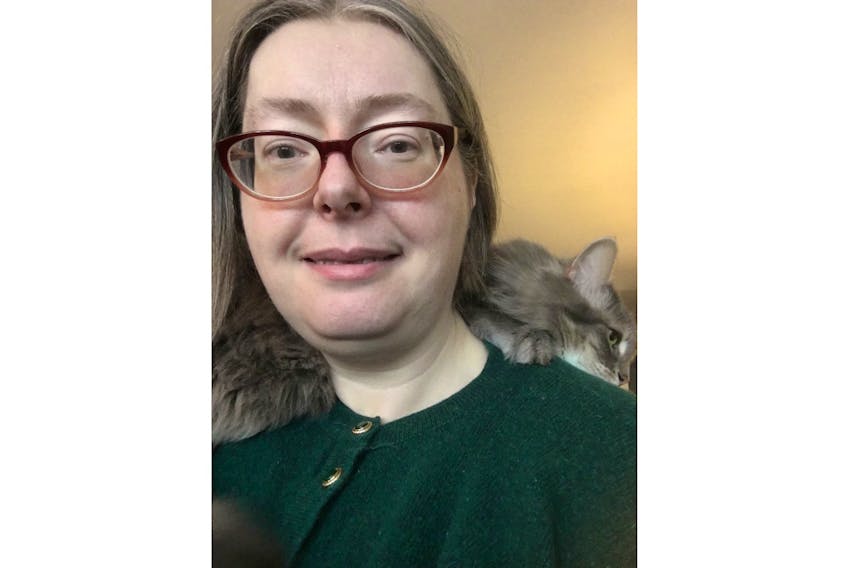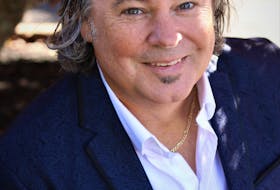“Nihil de nobis, sine nobis,” meaning nothing about us without us, was a rallying cry in disability activism in the 1990s.
For advocate Trudy Goold, the problem with the old way is clear.
“So many things are done by observation, as opposed to knowledge,” says the St. John’s, NL woman. “And when you're just observing, all you’ve got to go on is how you would interpret the behaviour that’s going on. One of the big problems is it’s just what a neurotypical sees happening, and they interpret that behaviour based on their own lens, based on how their brain works.”
Goold was diagnosed with Asperger’s (which has since been rolled into Autism Spectrum Disorder, although there is still debate about this in the community) in 2012, when she was 35 years old. Until then, she had been left to navigate the particularities of her own mind without a framework to guide her. When she was 18, her mother brought her to a mental health centre to be assessed.
“At the time, my coping mechanisms were failing, and I was effectively turning into a shut-in. Not good for me,” remembers Goold.
“I had an hour-and-a-half interview with a psychiatrist, and got told at the end, ‘Well, if you're an Aspie, you're the most well-adjusted Aspie I've ever met.’ And I just mentally went, ‘Thanks a lot… Not’, because that was no help whatsoever.”
In the spring of 2007, Goold’s youngest sister, who was studying speech pathology, forwarded three articles on autism.
“I managed to read through one-and-a-half of the three of them and burst into tears, had a meltdown. And we figured out later that it was relief,” says Goold. “Because I was seeing myself in these papers. It wasn’t that my brain was a mess and I was lazy and a procrastinator, it was very black and white that that was me.”
Not uncommon
In 2012, Goold went to an outpatient facility armed with information on autism diagnosis and the testimony of family members. She was able to obtain an official diagnosis. This designation opened up doors previously shut and led her to other people whose experiences were like her own.
“Not only did it give me access to the disability tax credit and the RDSP, because I was completely burned out and my sensory issues mean that I have problems getting a job, it also encouraged me to look more into autism,” says Goold.
“A huge part of autism is executive function issues, and I hadn’t known about that until I actually started to do a bit more research after my official diagnosis. I started going to the blogs of other autistic adults.”
Goold has since learned that situations like hers are not uncommon for autistic women. The condition presents differently in women, so women are therefore less likely to be diagnosed early. They are better at appearing neurotypical. But there is a cost to putting up a front, and Goold believes we’re just beginning to see it in the uptick of adult diagnoses.
“All those things added together, there are tons of girls and women from my generation and up who were never diagnosed. It was never recognized,” says Goold. “We’re getting around the 30, 40, 50, 60 age, and we’re burning out because of the sheer stress of masking, of appearing neurotypical, and we’re left going ‘I don’t know what’s going on, but I can’t do anything.’”
A science fiction writer, Goold used to use imagination as an escape. When she was younger, she found herself using it too often as an escape from discomfort or boredom, losing herself in other worlds while there were people right in front of her. Learning more about autism has helped her gain control of that part of herself.
“It is not my fault, it’s just the way my brain works. And that has made me a lot happier to be me, because it’s not something that I'm doing wrong. It’s not something that I'm failing at.”
“It’s brought me into the here and now. It’s helped make me more content with myself. I'm a lot happier with who I am now,” she says. “It is not my fault, it’s just the way my brain works. And that has made me a lot happier to be me, because it’s not something that I'm doing wrong. It’s not something that I'm failing at.”
Her cats, Imber and Tarma, have helped get Goold through difficult times.
“Having my cats helped and has always helped. Cats are nice and cuddly, and a lot of autistics tend to get along well with cats.”
That isn’t to say her imagination has faded away. She now uses it to help her sleep, or to generate ideas for her writing. Stereotypes of autism often portray individuals without imagination. Goold wishes people would broaden their understanding.
“I've always been highly imaginative. And there’s this fallacy out there that autistics have no imagination or no creativity. Every single autistic I know has some form of creative outlet. I write. A very good friend of mine paints and does other types of art. Another writes songs and plays music.”
Armed with her diagnosis, Goold aimed her formidable creativity in her blog, tagaught.net.
“I'm pretty open. I went and created a blog of my own to pay forward what I’d gotten from the blogs of other autistic adults. When it comes to stuff about being autistic, i'm pretty open,” says Goold. “And things about being autistic are good. My eye for detail. My joy in creativity. Having friends that are like me and can get me. Being autistic is not all bad stuff.”
There is a way forward. And, for Goold, it begins with taking autistic people seriously as advocates for themselves, and not relying only on secondary sources.
“So many people don’t actually listen to autistics when we say stuff about what we feel, what we’re thinking,” she says. “We’re the ones who are living the experience. We’re the ones who really know what we need.”
4 facts about Trudy Goold
- Trudy Goold is connected to the Canadian Autism Spectrum Disorder Alliance (CASDA), an umbrella group that helps the many autism advocacy groups in the country speak to government with one voice. In 2015, she was part of a working group funded by the Canadian government called CAP, Canadian Autism Partnership, aimed at helping create a national autism strategy. She has also presented at the CASDA leadership summit in Ottawa in 2017 and 2018.
- In 2018, she was elected as the autistic representative on the board of the Autism Society, Newfoundland and Labrador.
- She is currently involved in the creation of Autistics Aloud, a 10-volume magazine series produced and written entirely by people with autism.
- She is working with contacts to create an organization that can act as a voice for autistic people in directing both policy and research. “We want to act as a middle-man between autistics, researchers and policymakers, and go to our autistic membership and say, ‘What are the research topics that you think should be priorities in terms of adult autistic research topics? What are you looking for out of the government? Out of policy?”
RESOURCES
Some of the resources Trudy Goold used when first exploring her diagnosis are:
- Musings of an Aspie, another blog by a late-diagnosed woman that provides basic information and also explores what it’s like to be the autistic mother of a neurotypical child.
- Thinking Person’s Guide to Autism an anthology of perspectives by autistic people
- Autistic Women & Nonbinary Network (AWN) a resource for women, girls and nonbinary people that celebrates neurodiversity.
- For Patricia George-Zwicker and Autistics Aloud
Colin Hodd is a freelance writer based in Dartmouth, N.S.
RELATED









